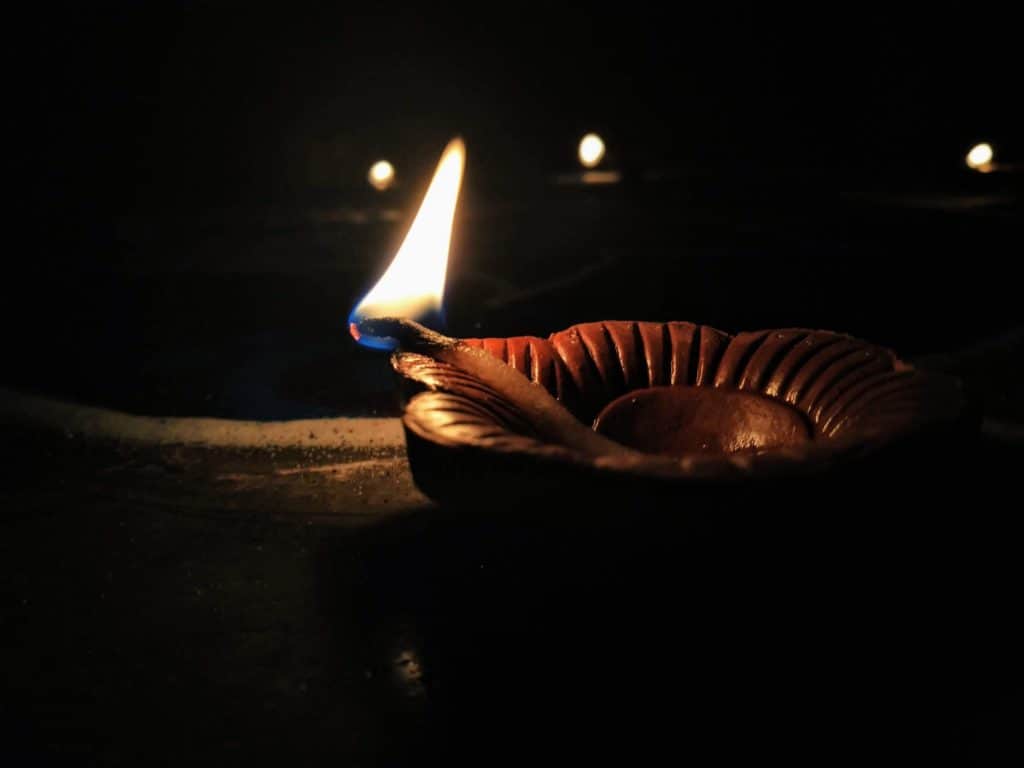When the pandemic broke, everyone feared Dharavi – with its dense population – could be tough to safeguard against the virus.
However, consistent efforts by authorities and locals ensured that the area recovered drastically. The number of new cases emerging has been steadily vacillating for as low as just 4-6 cases per day since the beginning of November.
Of the 3606 cases of COVID-19 registered in the area, about 3237 people have recovered and only 58 are undergoing treatment currently, according to information provided by the Assistant Municipal Commissioner (G-North ward) Kiran Dighavkar.
While this may be good news on the health front, economically Dharavi is yet to recover from the impact of the lockdown.
The potters of Kumbharwada the makers of earthen diyas and lamps for Dharavi, say their business has not taken off this Diwali. “Half of the our stock is still lying unsold,” says Dhirubhai Kamalia, who has been making and selling diyas for three generations now. “Even the few retailers who have bought from us are complaining that sales are not doing well,” he adds. Kumbharwada attracts buyers from as far as Surat, Goa and Pune.
“This is the cheapest place to buy diyas. During Diwali, I purchase diyas from here and sell it in my locality in Chembur with a very low margin. This year, I wasn’t sure if this market would be open and had to visit few days prior to just check it out,” says Pandurang Bhor, a part-time retailer.
About 50 potters-cum-shopkeepers of Kumbharwada, have been involved in pottery for successive generations for the past 100-odd years. “Most of the potters here have settled here for generations with no connect with their original native places. With the result, even during the peak infectious season, people chose to stay back here rather than migrate elsewhere” says Nathalal Chouhan sitting in front of his shop laden with diyas of all shapes and sizes. He says that even the few of those workers who chose to move out of Mumbai due to Covid, returned back very soon due to lack of available options elsewhere. “Here people earn about Rs 1500 per day, why would they settle to work for Rs 300 per day elsewhere?” he says.
Very little work from Kumharwada is outsourced to out to migrants, therefore there was no slump even during the lockdown.
“We are aware of the existing market conditions and hence all of us have decided to take a 20% cut in our prices to adjust with the sluggish/ market conditions, says Chouhan.

Apart from the potters, other prominent businesses of Dharavi are leather and garment factories. “Almost 50-60% of the garment manufacturing units are up and running today engaging over 15,000 workmen in the field. With no source of employment back at their native homes, migrants started returning within a month of going. However, they had trouble due to the closure of eatries in this locality. But, now with the restaurants opening up, the workers are able to return and work in full force,” says Babbu Khan, president of the Dharavi Garments Associaiton.
Khan, who is also the corporator from the Congress party, argues that it was the fear psychosis created by a media that kept customers out of this area. “The goods made here are the cheapest and meant for those with lowest socio-economic sections who have no savings and low income. That is the segment which is able to bounce back the fastest, unlike the market for branded goods. However the frightening media coverage created by the government has deterred customers from entering this place thereby harming our business prospects and affecting recovery,” says Khan.
The taxi drivers or traders or housewives, they all agree that the media publicity about COVID numbers in Dharavi was much worse than the actual disease. While Dharavi registered about 3600 cases till November 10, the neighbouring upmarket areas of Dadar and Mahim registered more than 4000 each. Also, while Dharavi had 58 active cases of COVID19, Dadar and Mahim had 115 and 283 active COVID19 cases till November 10. By contrast, the popular Dadar markets have been attracting huge Diwali shopping crowds and yet there has hardly any media coverage of that.
“The real Covid cases are in the bigger residential buildings and not among us slumdwellers. They earned huge funds in our name,” says a taxi driver.